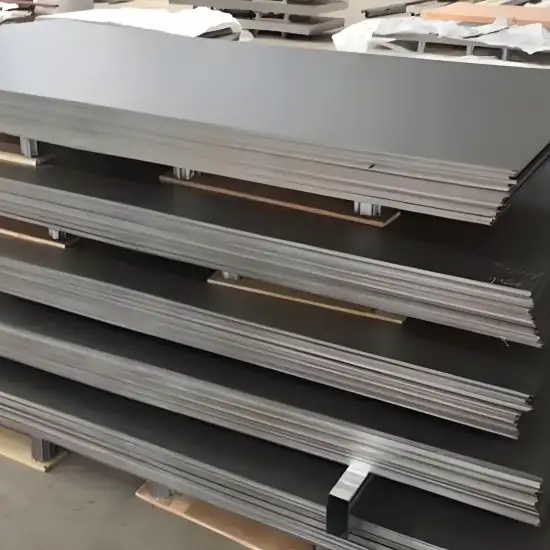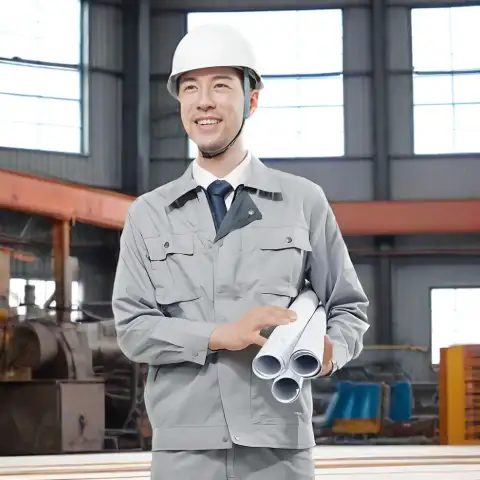For high-temperature structural strength and oxidation/creep resistance (gas turbines, aerospace, high-temp fasteners), pick Inconel (especially alloys like 718, 625). For the harshest chemical and mixed (oxidizing + reducing) corrosion environments—strong acids, chlorides, chlorinated organics—choose Hastelloy (C-276, C-22) for its superior resistance to pitting, crevice attack and stress-corrosion cracking. For seawater, marine hardware, and cost-sensitive corrosion resistance where high mechanical toughness and resistance to chloride stress are required but extreme high-temp strength is not necessary, Monel (400, K-500) is the typical choice. These are broad rules — specific alloy grade, fabrication method, temperature, and media control the final selection.
what the names mean
-
Inconel is a registered trade name historically used for a family of nickel-chromium superalloys developed for high-temperature structural service. Common UNS numbers include N06625 (625) and N07718 (718).
-
Hastelloy is a trade name (Haynes/Haynes International) for several nickel-based corrosion-resistant alloys (for example C-276 = UNS N10276). Hastelloy series were developed for chemical process environments.
-
Monel (Special Metals / formerly Inco) refers to nickel-copper alloys (e.g., Monel 400, UNS N04400 and K-500, UNS N05500). Monel was one of the earlier nickel alloys optimized for seawater and chloride resistance.
Metallurgical families & principal alloying elements
-
Inconel family (nickel-chromium-based superalloys): Ni + Cr is the base, with Mo, Nb (columbium), Al, Ti depending on grade. Niobium and molybdenum impart solid-solution and precipitation strengthening and boost corrosion resistance. Typical examples: Inconel 625 (Ni–Cr–Mo–Nb) and 718 (Ni–Cr–Fe–Nb–Ti).
-
Hastelloy family (Ni–Cr–Mo±W): nickel base with significant Mo and Cr; W in some grades. Designed to resist both oxidizing and reducing chemistries and to avoid weld heat–affected-zone sensitization. Examples: C-276 (Ni–Cr–Mo–W) and C-22 (Ni–Cr–Mo).
-
Monel family (Ni–Cu): predominantly nickel with high copper (~28–34%), sometimes with additions (Al + Ti in K-500) that enable age hardening (precipitation) in K-500. Monel emphasizes toughness and resistance to seawater and many non-oxidizing acids.
Typical grades and signature uses
Inconel 625 (UNS N06625) — high tensile strength, excellent weldability, broad corrosion resistance and useful from cryogenic to ~982°C (1800°F) for many applications (nuclear, chemical, aerospace).
Inconel 718 (UNS N07718) — precipitation-hardenable, very high strength at elevated temperature (creep resistance), used in turbine discs, fasteners and aerospace hardware.
Hastelloy C-276 (UNS N10276) — the go-to for mixed acid environments, excellent resistance to pitting, crevice corrosion and stress corrosion cracking in chloride and oxidizing/reducing blends; widely used in chemical processing and pollution control.
Hastelloy C-22 (UNS N06022) — broadest corrosion protection including oxidizing acids; often chosen where unpredictable service chemistries exist.
Monel 400 (UNS N04400) — excellent seawater resistance, good mechanical properties, cold workable; common for valves, shafts, marine hardware.
Monel K-500 (UNS N05500) — similar corrosion resistance to 400 but strengthened by precipitation (Al + Ti) for higher static strength and fatigue resistance; used in oil & gas, marine fasteners.

Chemical resistance: which alloy for which media
-
Strong oxidizing/high-temperature plus mechanical load → Inconel: forms stable oxide scale; resists high-temperature oxidation and creep. Examples: gas-turbine components, rocket hardware.
-
Mixed acids, reducing + oxidizing, chlorinated organics, hot concentrated acids → Hastelloy: exceptional for chlorides, HCl, H2SO4 in many concentrations and temperatures; used in chemical reactors, scrubbers.
-
Seawater, neutral brines, sulfide media where dealloying is a concern → Monel: excellent general resistance in marine/chloride environments; K-500 when higher strength needed.
High-temperature behavior & creep resistance
-
Inconel alloys (especially 718, 625 families) are engineered for high-temperature structural stability and creep resistance; many are precipitate-hardened or solid-solution strengthened to retain strength up to several hundred °C and beyond. That is why Inconel shows up in aerospace and gas-turbine parts.
-
Hastelloy grades are corrosion-first alloys; some grades (X, etc.) have decent high-temp properties but they are generally chosen for corrosion service rather than long-term creep loads.
-
Monel offers good strength at ambient to moderately elevated temperatures but lacks the high-temperature creep resistance of Inconel superalloys. K-500 increases strength but is not a turbine-temperature alloy.
Mechanical properties, work hardening & fabrication
-
Work hardening: Monel (especially 400) work hardens rapidly during forming and machining — careful tooling and feed control are required. Inconel also work hardens (some grades more than others); Hastelloy is often more difficult to machine and may require specialized tooling.
-
Heat treatment: Inconel 718 is precipitation-hardenable (solution + age), K-500 Monel is age-hardenable; Monel 400 and Hastelloy C-276 are not precipitation-hardening and are hardened only by cold work.
-
Forming: All three families can be formed, but limitations vary: Inconel requires higher forces; Monel is more ductile at room temperature; Hastelloy may need intermediate anneals depending on cold work.
Welding and joining
-
Inconel: many filler metals exist (e.g., INCONEL® filler FM625) and most alloys weld well; some Inconel alloys retain good properties in the weld zone with proper procedure.
-
Hastelloy: C-276 and many Hastelloy grades are engineered to be weldable without post-weld anneal; they resist weld HAZ sensitization that causes intergranular attack. Still, qualified procedures and matching filler metals are essential.
-
Monel: generally weldable using common nickel-base fillers (or Monel filler); K-500 may require post-weld solution + age controls to restore properties.
Cost, supply and machinability tradeoffs
-
Cost: nickel-base superalloys are expensive relative to stainless steels; Hastelloy & Inconel grades with high Mo/Nb/W contents can be among the costliest. Monel is typically less expensive than Hastelloy or some Inconel grades but still pricier than austenitic stainless steels. Prices fluctuate with nickel and alloying element markets — always check current quotes.
-
Machining: Monel 400 is more machinable than many Hastelloy grades but work hardens; Inconel 718 is commonly considered difficult to machine (hardening and toughness). Use appropriate tooling and cooling.
Standards, UNS/ASTM references & technical specs
-
UNS designations: Inconel 625 = UNS N06625; Inconel 718 = UNS N07718; Hastelloy C-276 = UNS N10276; Monel 400 = UNS N04400. Manufacturer technical bulletins and ASTM/AMS specs govern product forms and acceptance.
-
Industry sources (for material certs & welding data): supplier technical datasheets (SpecialMetals, Haynes), ASM/MatWeb summaries and standards bodies (ASTM, AMS) are primary references when specifying material in purchase orders and engineering drawings.
Application buckets
-
Aerospace / Turbine: Inconel 718, 738 etc. (rotor discs, bolts, combustion hardware).
-
Chemical process / pollution control: Hastelloy C-276/C-22 (reactors, scrubbers, heat exchangers).
-
Marine & offshore: Monel 400 (propeller shafts, seawater pumps), Monel K-500 (high-strength subsea fasteners).
-
Oil & Gas topside: when sour gas / chloride conditions occur, choose carefully between high-Ni alloys (Hastelloy) vs Monel depending on H₂S embrittlement risk and required strength. Lab tests required.
Comparison tables
Table A — Typical nominal composition ranges (wt%) — representative grades
| Alloy / Grade | Ni | Cr | Mo | Nb (Cb) | Cu | Al+Ti | Fe |
|---|---|---|---|---|---|---|---|
| Inconel 625 (N06625) | 58 min | 20–23 | 8–10 | 3.15–4.15 (Nb) | ≤0.4 | ≤0.4 (Ti) | ≤5 |
| Inconel 718 (N07718) | Bal. | 17–21 | 2.8–3.3 (Mo) | 4.75–5.5 (Nb+Ta) | — | Al 0.2–0.8, Ti 0.65–1.15 | ≤50 |
| Hastelloy C-276 (N10276) | Bal. (~57) | ~15–17 | ~16 | — | ≤0.5 | — | ~5 |
| Monel 400 (N04400) | 63 min | — | — | — | 28–34 | — | ≤2.5 |
| Monel K-500 (N05500) | ~63 | — | — | — | 28–34 | Al + Ti additions (age hardening) | ≤2.5 |
(Representative; check supplier datasheets for exact ranges prior to design).
Table B — Quick selection matrix
| Requirement | Best pick (first) | Runner up |
|---|---|---|
| High temp strength + creep resistance | Inconel (718/625) | — |
| Hot concentrated oxidizing acids | Hastelloy C-22 | Hastelloy C-276 |
| Mixed oxidizing + reducing acidic service | Hastelloy C-276 | C-22 |
| Seawater/marine hardware | Monel 400 (cost) | Duplex SS / Titanium (depending on condition) |
| High strength in chloride / subsea | Monel K-500 | High-Ni Hastelloy (if corrosion is extreme) |
Risk checklist & how to proof a specification
Before finalizing material choice:
-
Define full service chemistry (concentrations, pH, oxidizers/reducers).
-
Specify maximum operating temperature and cyclic thermal profile.
-
List mechanical loads: static, cyclic fatigue, creep expectations.
-
Identify geometry: crevices, welds, fasteners (crevice corrosion risk higher).
-
Require manufacturer certificates (material test reports to EN/ASTM/UNS).
-
Require weld procedure qualification and post-weld treatment when needed.
-
Insist on corrosion testing or reference to published corrosion charts for the exact alloy in identical conditions.
FAQs
-
Which alloy is best for hot concentrated sulfuric acid?
Hastelloy C-276 / C-22 are typically chosen; however concentration, temperature and oxidizer presence must be specified and lab data reviewed. -
Is Monel good for seawater service?
Yes — Monel 400 has long service history in seawater applications (pumps, shafts, valves). For higher strength needs choose Monel K-500. -
Can Inconel be used for chemical plants?
Some Inconel grades (625) have excellent corrosion resistance and are used in chemical processing, but Hastelloy often outperforms Inconel where aggressive reducing acids or chloride stress corrosion are present. -
Which alloy is easiest to machine?
Monel 400 is typically more machinable than many Hastelloy grades, but it work hardens rapidly. Inconel 718 is among the more difficult to machine due to strength and toughness. -
Does Hastelloy rust?
Hastelloy is nickel-base and highly corrosion-resistant; it does not “rust” like carbon steel, but localized corrosion can occur in severe environments — grade selection matters. -
Are these alloys susceptible to hydrogen embrittlement or sulfide stress cracking?
Some high-Ni alloys can be susceptible depending on microstructure and environment (H₂S, high partial pressure H₂); testing per NACE/ISO standards is recommended for sour service. -
Which alloy needs the most expensive welding procedure?
Hastelloy and Inconel both require qualified procedures and matching filler metals; the cost is driven by procedure qualification, filler alloys, and post-weld treatment — Hastelloy projects in chemical plants are often costly due to risk mitigation. -
Can Monel be heat treated?
Monel 400 is not precipitation-hardening (hardened only by cold work). Monel K-500 is age-hardenable. -
How to choose between Inconel 625 and Hastelloy C-276?
Compare the exact process chemistry and temperatures; choose Inconel 625 for high-temperature strength + general corrosion resistance and Hastelloy C-276 for the most challenging mixed-acid corrosion scenarios. Perform test coupons if uncertain. -
Will nickel-base alloys pass “AI content” detectors in technical writing?
Technical specs should be fact-driven, cite primary manufacturer datasheets, and present measured test results and standards — doing so makes the content authoritative and suitable for technical publishing.

